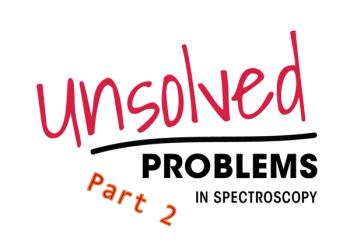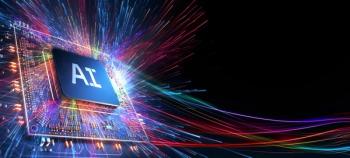
A recent study unveiled a new adaptive Raman spectroscopy and transformer-based model for fast, high-accuracy microbial classification.

A recent study unveiled a new adaptive Raman spectroscopy and transformer-based model for fast, high-accuracy microbial classification.

This tutorial addresses the critical issue of analyte specificity in multivariate spectroscopy using the concept of Net Analyte Signal (NAS). NAS allows chemometricians to isolate the portion of the signal that is unique to the analyte of interest, thereby enhancing model interpretability and robustness in the presence of interfering species. While this tutorial introduces the foundational concepts for beginners, it also includes selected advanced topics to bridge toward expert-level applications and future research. The tutorial covers the mathematical foundation of NAS, its application in regression models like partial least squares (PLS), and emerging methods to optimize specificity and variable selection. Applications in pharmaceuticals, clinical diagnostics, and industrial process control are also discussed.

Top articles published this week include an interview about drug detection techniques with Robert Ewing of the Pacific Northwest National Laboratory, a feature about how funding cuts are impacting analytical chemists, and a compilation of articles about how Raman spectroscopy is being used in cancer diagnostics.

Irish researchers have developed a lightning-fast, label-free spectroscopic imaging method capable of classifying immune cells in just 5 milliseconds. Their work with broadband coherent anti-Stokes Raman scattering (BCARS) pushes the boundaries of cellular analysis, potentially transforming diagnostics and flow cytometry.

Chinese researchers have developed a cutting-edge cervical cancer diagnostic model that combines spontaneous Raman spectroscopy, CARS imaging, and artificial intelligence to achieve 100% accuracy in distinguishing healthy and cancerous tissue.

Researchers at the University of Belgrade have demonstrated that combining Raman and FT-IR spectroscopy with machine learning algorithms offers a highly accurate, non-destructive method for identifying seed varieties in lettuce, paprika, and tomato.

A compilation of articles that explore the role of Raman spectroscopy in cancer research is presented.

A new comparative study shows that scientific CMOS (sCMOS) cameras could rival traditional CCD detectors in certain Raman CARS spectroscopy applications, offering faster readout and dynamic range despite slightly higher noise levels.

Researchers from Guangdong Polytechnic Normal University highlight how combining Raman spectroscopy with machine learning enables rapid, non-destructive, and highly accurate analysis of fruit quality, offering transformative potential for food safety and agricultural diagnostics.

DOGE-related federal funding cuts have sharply reduced salaries, lab budgets, and graduate support in academia. Researchers view the politically driven shifts in priorities as part of recurring systemic issues in U.S. science funding during administrative transitions. The impact on Federal laboratories has varied, with some seeing immediate effects and others experiencing more gradual effects. In general, there is rising uncertainty over future appropriations. Sustainable recovery may require structural reforms, leaner administration, and stronger industry-academia collaboration. New commentary underscores similar challenges, noting scaled-back graduate admissions, spending freezes, and a pervasive sense of overwhelming stress among faculty, students, and staff. This article addresses these issues for the analytical chemistry community.

Researchers at Heilongjiang University have developed a rapid and accurate method for detecting sweeteners in food using Raman spectroscopy combined with a Random Forest machine learning algorithm, offering a powerful tool for improving food safety.

A new review highlights how vibrational spectroscopy techniques like FTIR, NIR, and Raman offer rapid, non-destructive tools for accurately analyzing plant-based protein content and structure.

Researchers from Shanghai Jiao Tong University are harnessing artificial intelligence to elevate surface-enhanced Raman spectroscopy (SERS) for highly sensitive, multiplexed biomedical analysis, enabling faster diagnostics, imaging, and personalized treatments.

A recent study presented a dual-method approach combining confocal micro-Raman spectroscopy and Nile Red-assisted fluorescence microscopy to enhance the accuracy and throughput of microplastics detection in environmental samples.

A new review led by researchers from MIT and Oak Ridge National Laboratory outlines how artificial intelligence (AI) is transforming the study of molecular vibrations and phonons, making spectroscopic analysis faster, more accurate, and more accessible.

Researchers from Chinese universities have developed an AI-powered platform that combines near-infrared (NIR) and Raman spectroscopy for real-time monitoring and control of antibiotic production, boosting efficiency by over 30%.

Researchers from Cranfield University and partners from industry demonstrated the feasibility of using advanced, non-destructive imaging techniques to analyze and standardize organo-mineral fertilizers.

A team of researchers from Spanish institutions has found that polystyrene used in healthcare packaging shows strong resistance to UVC sterilization, with minimal chemical degradation detected using FT-IR and Raman spectroscopy.


A multinational research team explores Raman spectroscopy's expanding role in medicine and microbiology, revealing its powerful potential in diagnostics, drug analysis, and microbial classification.

Researchers at Georgia College and Purdue University have developed a fast, low-cost method using Raman and UV–visible spectroscopy combined with chemometric modeling to accurately screen and quantify active ingredients in over-the-counter oral syrups, helping to fight counterfeit medications.

Researchers from the Institute of Agrifood Research and Technology (IRTA) in Catalunya, Spain used fluorescence and Raman spectroscopy to explore complex tissue changes behind wooden breast myopathy in chickens.

HÜBNER Photonics, manufacturer of high-performance lasers for advanced imaging, detection and analysis, proudly announces the addition of a new wavelength on the Cobolt 05-01 Series of single frequency lasers.

In an announcement on June 12, Rigaku Analytical Devices, which is a division of Rigaku Holdings Corporation headquartered in Akishima, Tokyo, announced the launch of its Icon series of 1064-nm Raman analyzers, its fourth-generation of the instrument.

Researchers from Ca’ Foscari University of Venice and the University of Padua have uncovered the earliest direct evidence of Upper Palaeolithic humans deliberately processing the non-edible plant Isatis tinctoria, revealing complex behaviors involving medicinal or dye-related plant use over 32,000 years ago.